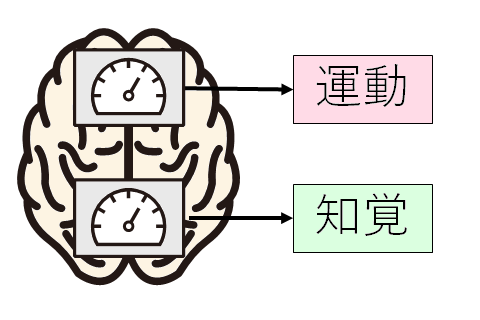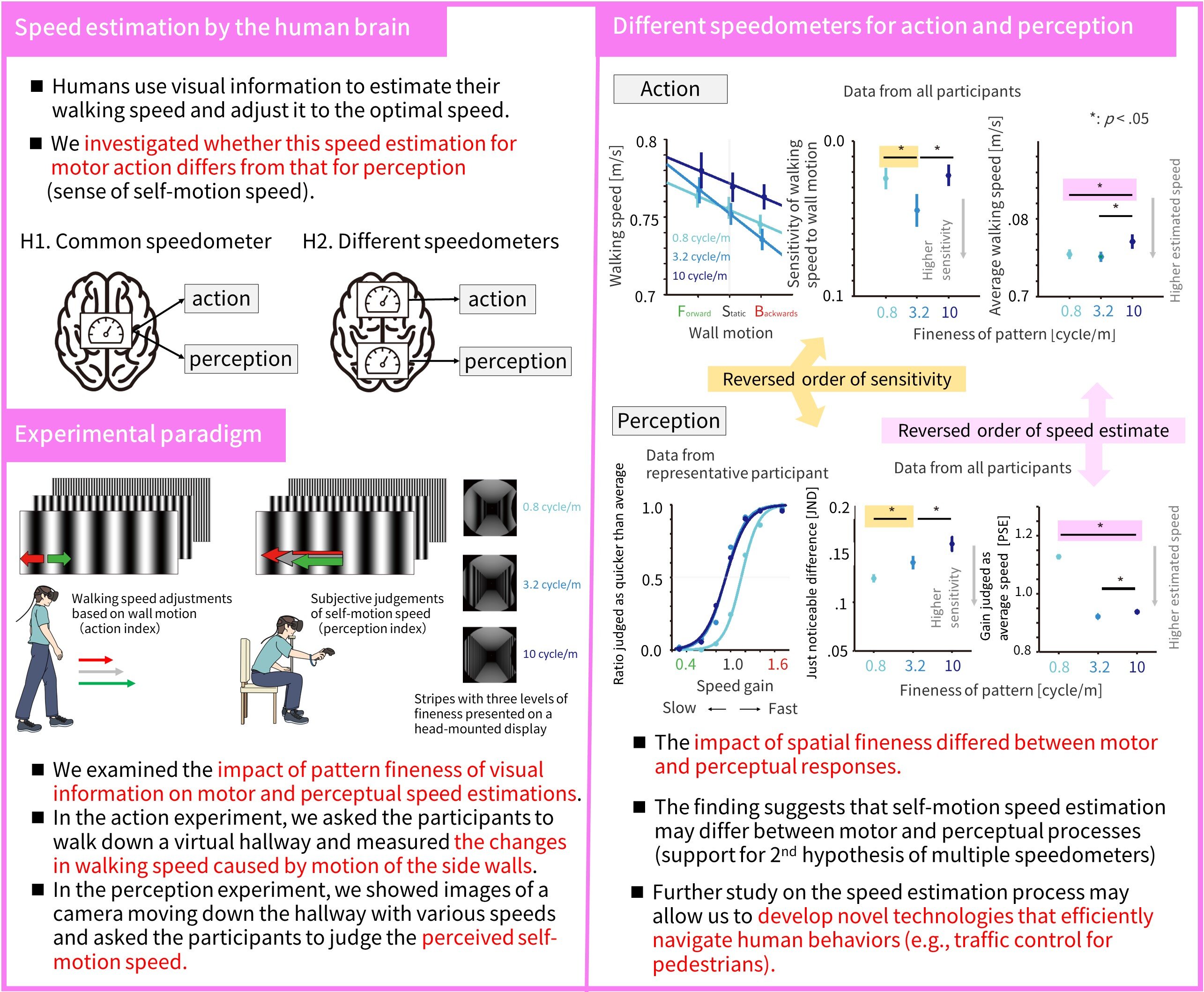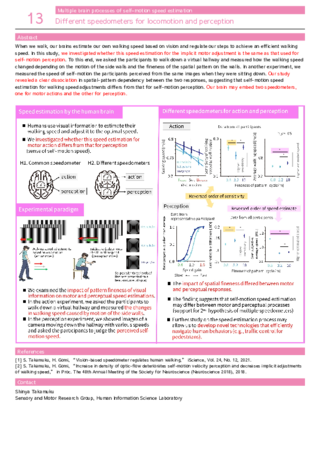| 13 |
Different speedometers for locomotion and perceptionMultiple brain processes of self-motion speed estimation 
|
|---|
When we walk, our brains estimate our own walking speed based on vision and regulate our steps to achieve an efficient walking speed. In this study, we investigated whether this speed estimation for the implicit motor adjustment is the same as that used for self-motion perception. To this end, we asked the participants to walk down a virtual hallway and measured how the walking speed changed depending on the motion of the side walls and the fineness of the spatial pattern on the walls. In another experiment, we measured the speed of self-motion the participants perceived from the same images when they were sitting down. Our study revealed a clear dissociation in spatial-pattern dependency between the two responses, suggesting that self-motion speed estimation for walking speed adjustments differs from that for self-motion perception. Our brain may embed two speedometers, one for motor actions and the other for perception.

[1] S. Takamuku, H. Gomi, “Vision-based speedometer regulates human walking,” iScience, Vol. 24, No. 12, 2021.
[2] S. Takamuku, H. Gomi, “Increase in density of optic-flow deteriorates self-motion velocity perception and decreases implicit adjustments of walking speed,” in Proc. The 48th Annual Meeting of the Society for Neuroscience (Neuroscience 2018), 2018.
Shinya Takamuku
Sensory and Motor Research Group, Human Information Science Laboratory




